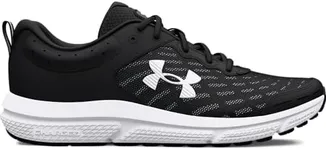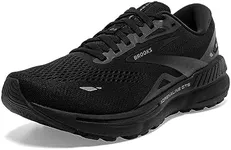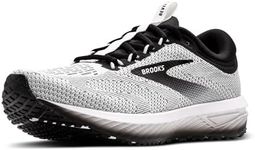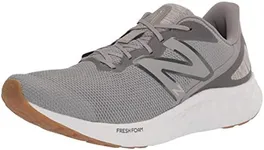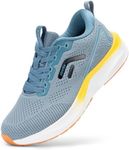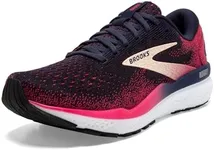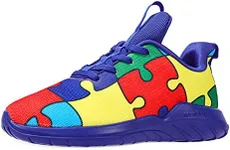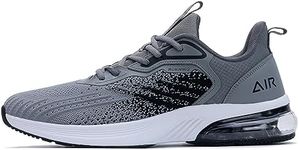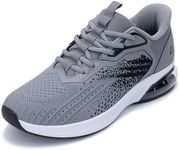Buying Guide for the Best Cheap Running Shoes
Choosing the right running shoes is crucial for comfort, performance, and injury prevention. When selecting running shoes, it's important to consider various factors that will affect your running experience. Here are some key specifications to look out for and how to navigate them to find the best fit for you.FitThe fit of the shoe is how well it conforms to the shape of your foot. A good fit is essential to prevent blisters, discomfort, and injuries. Shoes that are too tight can cause pain, while shoes that are too loose can lead to instability. To find the right fit, ensure there is about a thumb's width of space between your longest toe and the end of the shoe. The shoe should feel snug around the midfoot and heel without being restrictive.
CushioningCushioning refers to the amount of padding in the shoe, which affects shock absorption and comfort. Shoes with more cushioning are ideal for long-distance running or for runners who prefer a softer feel. Less cushioning can provide a more responsive and natural running experience, which is often preferred by experienced runners or those running shorter distances. Consider your running style and the type of terrain you will be running on when choosing the level of cushioning.
Arch SupportArch support is the level of support provided to the arch of your foot. This is important for maintaining proper alignment and preventing injuries. There are three main types of arch support: neutral, stability, and motion control. Neutral shoes are suitable for runners with normal arches, stability shoes are for those with mild to moderate overpronation, and motion control shoes are for severe overpronation. Determine your arch type and pronation pattern to choose the right level of support.
Heel-to-Toe DropThe heel-to-toe drop is the difference in height between the heel and the forefoot of the shoe. This affects your running mechanics and can influence comfort and performance. A higher drop (8-12mm) can provide more heel cushioning and is suitable for heel strikers. A lower drop (0-4mm) promotes a more natural running gait and is preferred by midfoot or forefoot strikers. Consider your running style and any previous injuries when selecting the heel-to-toe drop.
DurabilityDurability refers to how long the shoes will last before they need to be replaced. This is influenced by the materials used in the shoe's construction and the type of running you do. Shoes with durable outsoles and high-quality uppers will last longer, especially if you run on rough terrain or frequently. If you run primarily on roads or treadmills, you may not need as much durability. Assess your running habits and choose a shoe that will provide the longevity you need.
BreathabilityBreathability is the shoe's ability to allow air to circulate, keeping your feet cool and dry. This is important for comfort, especially during long runs or in hot weather. Shoes with mesh uppers or ventilation features offer better breathability. If you tend to sweat a lot or run in warm climates, prioritize shoes with good breathability to prevent discomfort and blisters.

